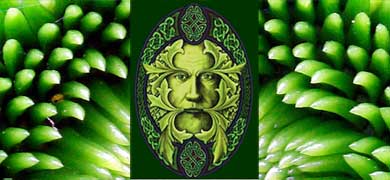Unique Meanings of Yellow in Different Cultures
In Japan, yellow often represents courage. In China, adult movies are referred to as yellow movies. In Russia, a colloquial expression for an insane asylum used to be "yellow house." Bright “marigold” yellow may be associated with death in some areas of Mexico.
Those condemned to die during the Inquisition wore yellow as a sign of treason.
A yellow patch was used to label Jews in the Middle Ages. European Jews were forced to wear yellow or yellow “Stars of David” during the Nazi era of prosecution.
Designing with Yellow

Although there are strong mustard yellows and deep yellow ochres, there are no dark yellows.

Yellow is the only color that reacts badly to black: Add a little black and it becomes a sickly yellow-green.

Yellow is the most visible color of the spectrum.
The human eye processes yellow first. This explains why it is used for cautionary signs and emergency rescue vehicles. Peripheral vision is 2.5 times higher for yellow than for red.
Yellow has a high light reflectance value and therefore it acts as a secondary light source. Excessive use of bright yellow (such as on interior walls) can irritate the eyes.
It is not true that babies cry more in yellow rooms, or that yellow causes diarrhea, or that husbands and wives fight more in yellow kitchens.
Read the text carefully and answer the questions:
1. What kind of colour is yellow?
2. What flowers are associated with this colour?
3. Does it have any meaning in religious?
4. What does this colour represent in Asia?
5. How is it used in design?
Glossary
| English | Russian | Kazakh |
| egg yolk | яичный желток | жұмыртқаның сарысы |
| daffodils | нарциссы | нәркестер |
| coincidence | совпадение | сәйкес келу |
| marigold | ноготки | тырнақтар |
| excessive | чрезмерный | шамадан тыс |
| reflectance | коэффициент отражения | шағылысудың коэффициенті |
| jaundice | желтуха | сары ауру |
| pestilence | мор | iндет |
Blue

Blue is the favorite color of all people. It’s nature’s color for water and sky, but is rarely found in fruits and vegetables. Today, blue is embraced as the color of heaven and authority, denim jeans and corporate logos. It is cold, wet, and slow as compared to red’s warmth, fire, and intensity.
Blue has more complex and contradictory meanings than any other color. These can be easily explained by pinpointing by the specific shade of blue.

Dark blue: trust, dignity, intelligence, authority Bright blue: cleanliness, strength, dependability, coolness. The origin of these meanings arise from the qualities of the ocean and inland waters, most of which are more tangible.)
Light (sky) blue: peace, serenity, spiritual, infinity. The origin of these meanings is the intangible aspects of the sky.)
Most blues convey a sense of trust, loyalty, cleanliness, and understanding. On the other hand, blue evolved as symbol of depression in American culture. “Singing the blues” and feeling blue” are good examples of the complexity of color symbolism and how it has been evolved in different cultures.

Blue's global similarities are significant. Blue is the favorite color of all people.
53% of the flags in the world contain blue. Blue is the most commonly used color in corporate identity. A dark blue suit is professional business attire. Blue jeans are worn all over the world. Aristocracy is blue-blooded in all European languages.
Unique Meanings of Blue in Different Cultures
Greeks believe that blue wards off "the evil eye. The English “to feel blue” has no equivalent in other languages while in German “blau sein” (literally: to be blue) means to be drunk or in Russian “голубой” (literally: light blue) means to be homosexual. Dark blue is the color of mourning in Korea. The god Krishna has blue skin. Shades of blue are described as shallow or deep instead of light or dark in China.
Blue is for a baby girl; pink for a baby boy in Belgium. “Prince Charming” is called “The Blue Prince” in Italy and Spain.
Designing with Blue
Blue ranks so high as a favorite color that you can’t go wrong if you use blue. However, blue can be over-used and may wind up a design cliché if used alone. Combining blue with another color creates a more creative effect.
Blue is sharply refracted by the eyes. This causes the lens to flatten and to push the blue image back. We perceive that blue areas are receding and smaller.
The same refraction causes visual fog if used excessively in interior spaces.
 Unfortunately, there are many “pseudo studies” that suggest that blue rooms can calm or depress people. Under closer scrutiny none of these have stood up. However, there’s lots of money to be made telling people otherwise.
Unfortunately, there are many “pseudo studies” that suggest that blue rooms can calm or depress people. Under closer scrutiny none of these have stood up. However, there’s lots of money to be made telling people otherwise.
Blue has very few connections to taste or smell. Therefore it may act as an appetite suppressant.
Read the text carefully and answer the questions:
1. What kind of colour is blue?
2. Why people like blue colour?
3. Does it have any meanings in different cultures?
4. What does this colour represent in design?
5. Does combination of blue with other colours create any effect?
Glossary
| English | Russian | Kazakh |
| scrutiny | рассмотрение | қарастыру |
| infinity | бесконечность | шексiздiк |
| refraction | преломление | сынуы |
| perceive | воспринимать | қабылдау |
| dignity | достоинство | қадыр |
| convey | передавать | беру |
| suppressant | подавление | басу, жаншу |
Green
 Green is no longer just a color. It's now the symbol of ecology .
Green is no longer just a color. It's now the symbol of ecology .
Since the beginning of time, green has signified growth, rebirth, and fertility. In pagan times, there was the "Green Man" - a symbol of fertility. In Muslim countries, it is a holy color and in Ireland, a lucky color. It was the color of the heavens in the Ming Dynasty.
Today's greens can be found in a wide range of objects: pea soup, delicate celadon glazes, sleazy shag carpet, sickly bathroom walls, emeralds, wasabi, and sage. The English language reflects some strange attributes: Would you rather be green with envy, green behind the ears, or green around the gills? (Idiomatic American English for extremely envious, immature or nauseated.)
Green is universally associated with nature. Green symbolizes ecology and the environment. Traffic lights are green all over the world.
